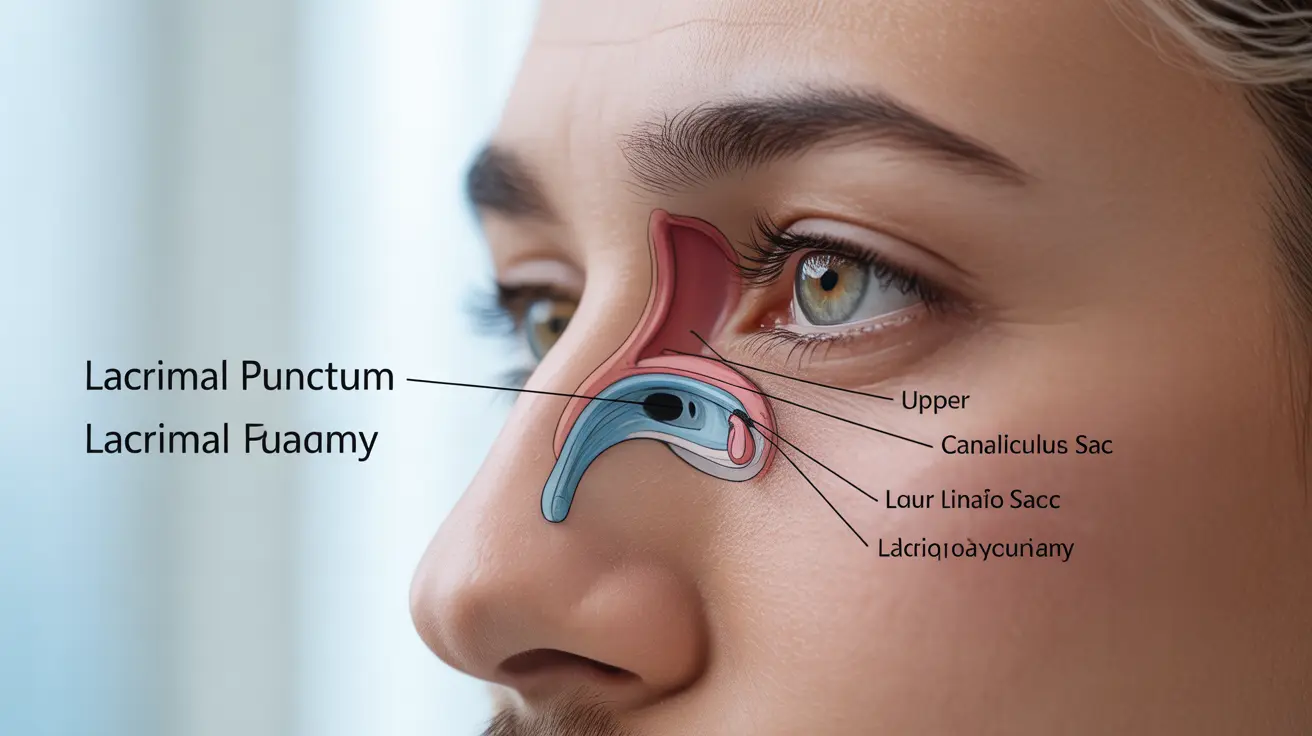If you've noticed a small hole in the inner corner of your eyelid, you're likely observing a natural anatomical feature called the lacrimal punctum. These tiny openings play a crucial role in your eye's tear drainage system and are essential for maintaining healthy eye moisture levels.
Understanding the difference between normal eyelid anatomy and potential problems can help you identify when medical attention might be needed. Let's explore everything you need to know about these important eyelid structures and related conditions.
The Lacrimal Punctum: Your Eye's Natural Drainage System
The lacrimal punctum is a small, natural opening located in both the upper and lower eyelids near the inner corner of each eye. These tiny holes are part of your tear drainage system, working like miniature drains to help maintain proper eye moisture balance.
Each punctum connects to a small channel called the canaliculus, which directs tears into the nasolacrimal duct and eventually into your nose. This is why your nose often runs when you cry!
Normal vs. Abnormal Eyelid Openings
- Normal lacrimal puncta are:
- Approximately 0.3mm in diameter
- Located at the inner corner of both upper and lower eyelids
- Slightly elevated on a small tissue mound
- Symmetrical between both eyes
- Abnormal holes or gaps in the eyelid may be:
- Larger than normal puncta
- Located in unusual positions
- Associated with tissue damage or inflammation
- Accompanied by symptoms like excessive tearing or irritation
Common Problems Affecting the Lacrimal System
Punctal Stenosis
This condition occurs when the punctal opening becomes too narrow or completely closed, leading to excessive tearing and eye irritation. It can be caused by aging, inflammation, or certain medications.
Ectropion
When the eyelid turns outward, it can affect the position and function of the punctum, potentially causing tear drainage issues and dry eye symptoms.
Infection and Inflammation
- Various conditions can affect the area around the punctum, including:
- Canaliculitis (infection of the tear duct)
- Dacryocystitis (infection of the tear sac)
- General eyelid inflammation
When to Seek Medical Attention
- Consult an eye care professional if you experience:
- Excessive tearing (epiphora)
- Eye irritation or redness
- Discharge from the eye
- Pain or swelling near the inner corner of the eye
- Any unusual openings in your eyelid
- Changes in the appearance of your normal puncta
Treatment Options
- Treatment for punctal and eyelid issues varies depending on the underlying cause and may include:
- Punctal dilation
- Antibiotic or anti-inflammatory medications
- Punctal plugs
- Surgical repair for structural problems
- Treatment of underlying conditions
Frequently Asked Questions
What is the small hole in my eyelid near the inner corner and what does it do?
The small hole in your eyelid near the inner corner is called the lacrimal punctum. It's a natural drainage point that helps channel tears from your eye's surface into your nasal cavity, maintaining proper eye moisture levels.
How can I tell the difference between a normal lacrimal punctum and an abnormal hole or gap in my eyelid?
A normal lacrimal punctum is tiny (about 0.3mm), symmetrical, and located at the inner corner of both eyelids. Abnormal holes are usually larger, may appear in unusual locations, and often cause symptoms like tearing or irritation.
What causes abnormal holes or gaps in the eyelid, and when should I see a doctor?
Abnormal holes can result from injury, surgery complications, or certain medical conditions. See a doctor if you notice any unusual openings, experience excessive tearing, eye irritation, or changes in your normal punctal appearance.
Can problems with the lacrimal punctum cause excessive tearing or eye irritation?
Yes, issues with the lacrimal punctum, such as stenosis (narrowing) or blockage, can cause excessive tearing (epiphora) and eye irritation because tears cannot drain properly.
How are eyelid conditions like blepharitis or chalazion different from issues with the eyelid punctum?
Blepharitis and chalazion are inflammatory conditions affecting the eyelid and oil glands, while punctal issues specifically involve the tear drainage system. Though they can co-exist, they require different treatments and management approaches.




